If one makes the effort, if one closes one's eyes very tightly and concentrates on listening, perhaps one can still hear that unmistakable rattle that one noticed, already from a distance, of the arrival of the Tranvía de la Sierra at each station. Its echo still reverberates in the walls of those dark and deep tunnels that it had to cross until reach their goal: the Barranco de San Juan, the last of the stops was in the very heart of the Sierra Nevada.
Of that historical milestone little remains in the present: There are hardly any rails or catenaries anymore, neither wagons nor travelers, but it does remain for the memory a route of a handful of kilometers that respects part of the original layout.
Starting from the mountain town of Guejar Sierra, and until reaching the halt that indicated the end of the route, the Sierra Tram Greenway, through which hikers and hikers walk every day, aware that the route they take is a little piece of history. A story that began a long time ago.
THE ORIGIN? WE TELL YOU
They say that that tram was not, however, the first attempt to connect Granada with Sierra Nevada by rail, but the challenge had always involved an engineering feat of such magnitude that the ideas only remained on paper: they never prospered. They did not, of course, count on the cunning –and above all, the determination– of a character who would forever change the history of the city. Julio Quesada-Cañaveral y Piédrola, named by Alfonso XIII Duke of San Pedro de Galatino, He would be the visionary who would finally achieve the feat.
We are talking about the beginning of the 20th century, a time when the duke sought to create a Sierra Nevada that would more closely resemble the Swiss Alps than to the pure white-covered mountains of southern Andalusia.
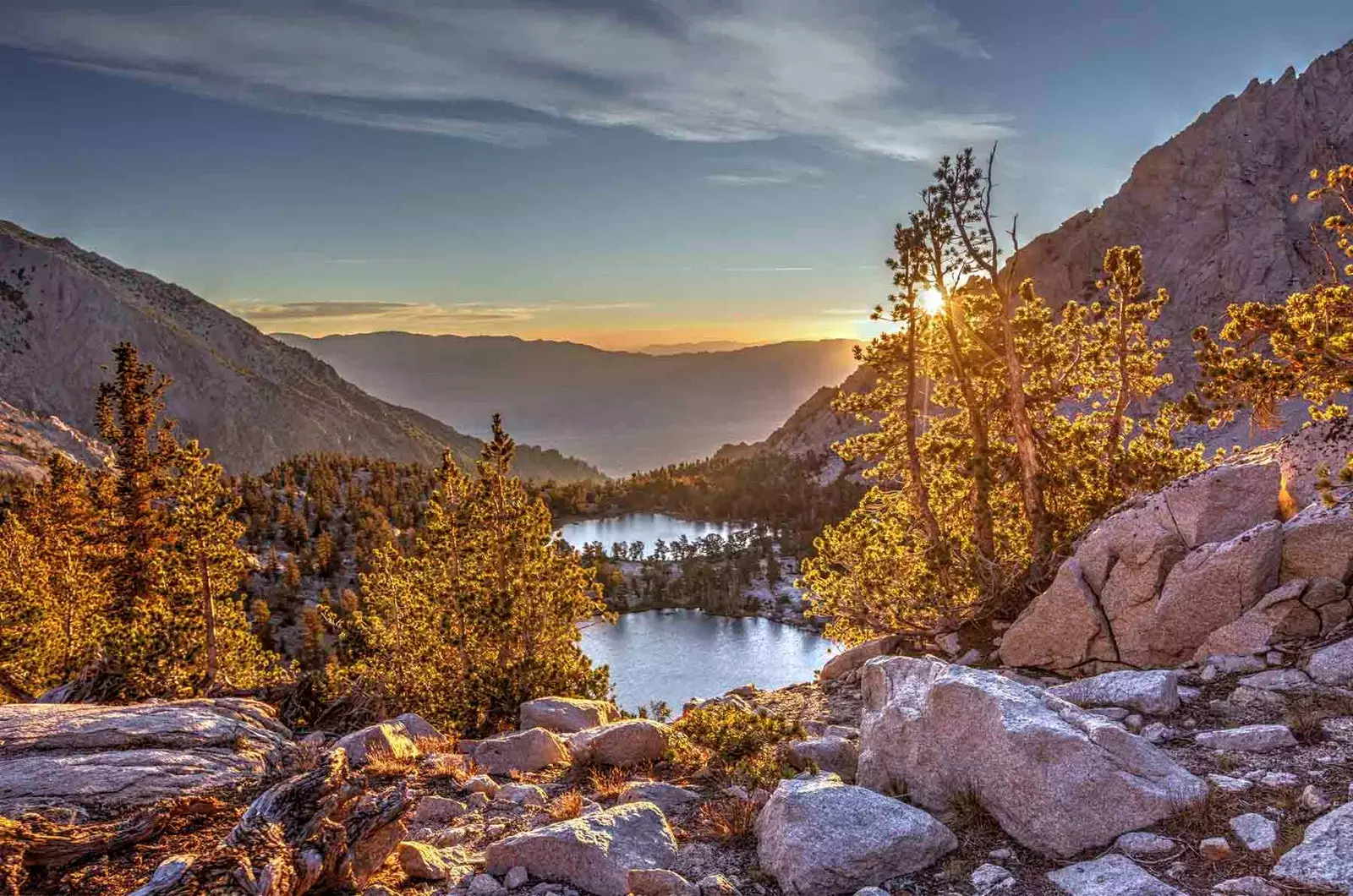
Sierra Nevada National Park.
To begin with, he stood up one of the city's leading hoteliers at the time, the Alhambra Palace, with the intention of attracting the most elite tourism. ahead of its time, and pioneer of the sugar industry in Spain, took advantage of his wealth –it is said that he even minted coins with his face– to open, some time later, the first tourist facility in Sierra Nevada, the Hotel del Duque. The tram would serve to link both accommodations directly.
Few believed that that dream would come true and, nevertheless, it was achieved: with an unprecedented work, gorges and cliffs, mountains and rivers were saved, and it was possible to face the harsh orography of the area. For it up to 14 tunnels and 21 bridges were built, so that On February 21, 1925, the Tranvía de la Sierra was inaugurated. with all imaginable pomp present. Neither King Alfonso XIII nor Manuel Azaña wanted to miss the moment.
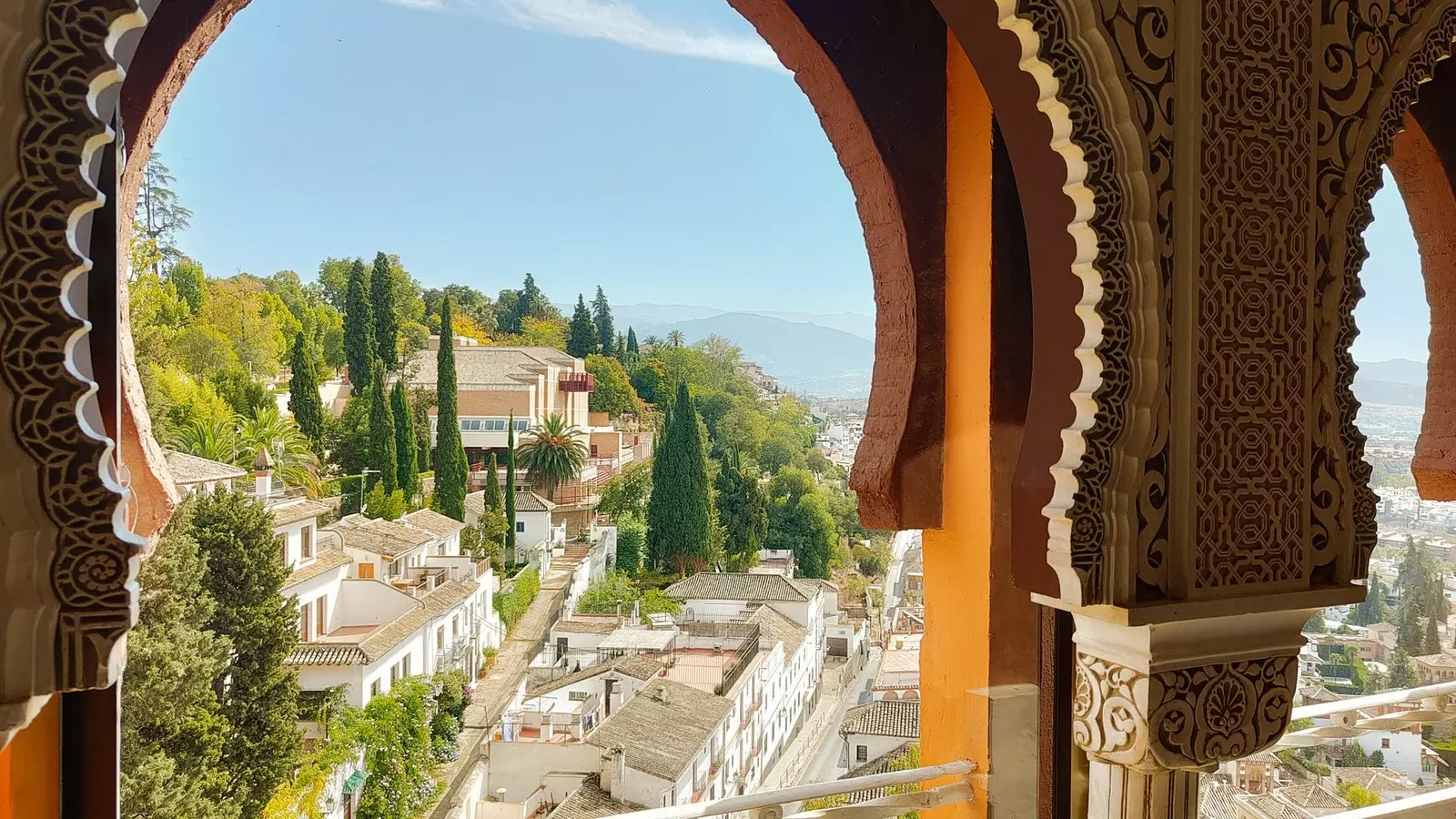
Views from the Alhambra Palace.
PAST AND PRESENT ON A ROUTE
During the 19-kilometre journey that those coquettish wagons with chestnut wood seats, tea and infusions and some fine pastries such as piononos were served. Four pesetas cost the trip per passenger, although over time, those wagons began to also transport goods: for example, copper chalcopyrite and serpentine marble extracted from the mines of Sierra Nevada.
The travelers who went to the Hotel del Duque –today transformed into a Diocesan Seminary– were picked up at the Maitena station in horse-drawn carriages, in which they made the last part of the route. were altogether 50 years of a project that was never profitable but which, however, remained alive until it gave no more of itself: in 1975 he made what was his last trip. The most romantic still remember that tour with nostalgia.
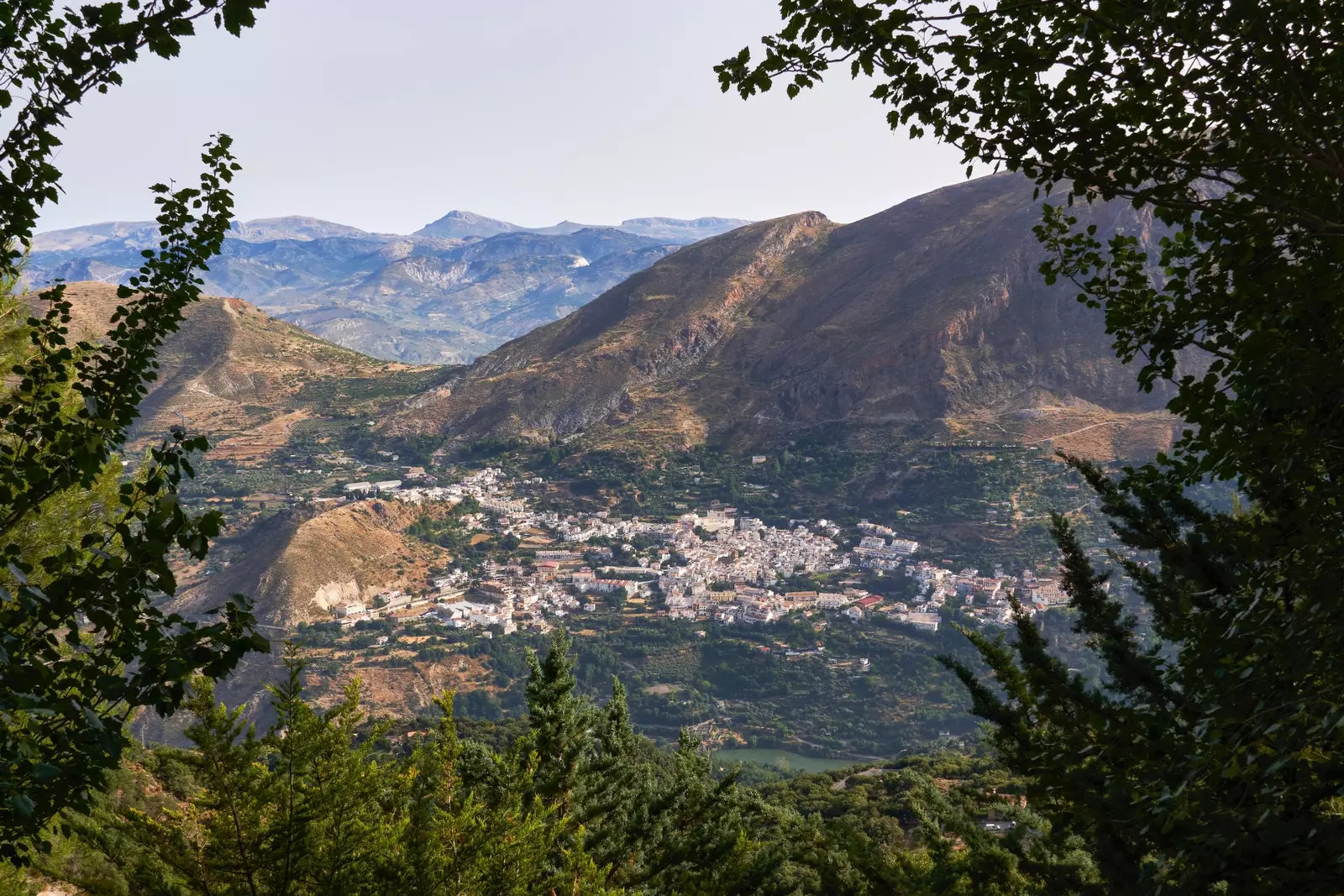
Guejar Sierra.
Encouraging yourself to walk those last kilometers converted into a trail implies, without a doubt, approaching Güéjar Sierra, from where the route starts. It will not hurt to take the opportunity to soak up the mountain air of the town, in which between cobbled and convoluted slopes alleys full of portals –the traditional ones tinaos of the Alpujarra–, you can breathe the pure air of Sierra Nevada: the one that cleans in summer; the one that in winter takes your breath away.
Flowers and plants adorn the entrances to the houses, those where in the past it used to be used to remove the harness from the donkey. A large part of the local life is concentrated in the Plaza Mayor: the town hall, the church, and a good handful of bars, bring the neighbors together every day. in any of the numerous fountains in Güéjar Sierra –there are scattered throughout the town– It will be necessary to fill the bottle on duty to take on an excursion: the spring water, they say, has made some residents reach 103 years of age. We lose nothing by trying.
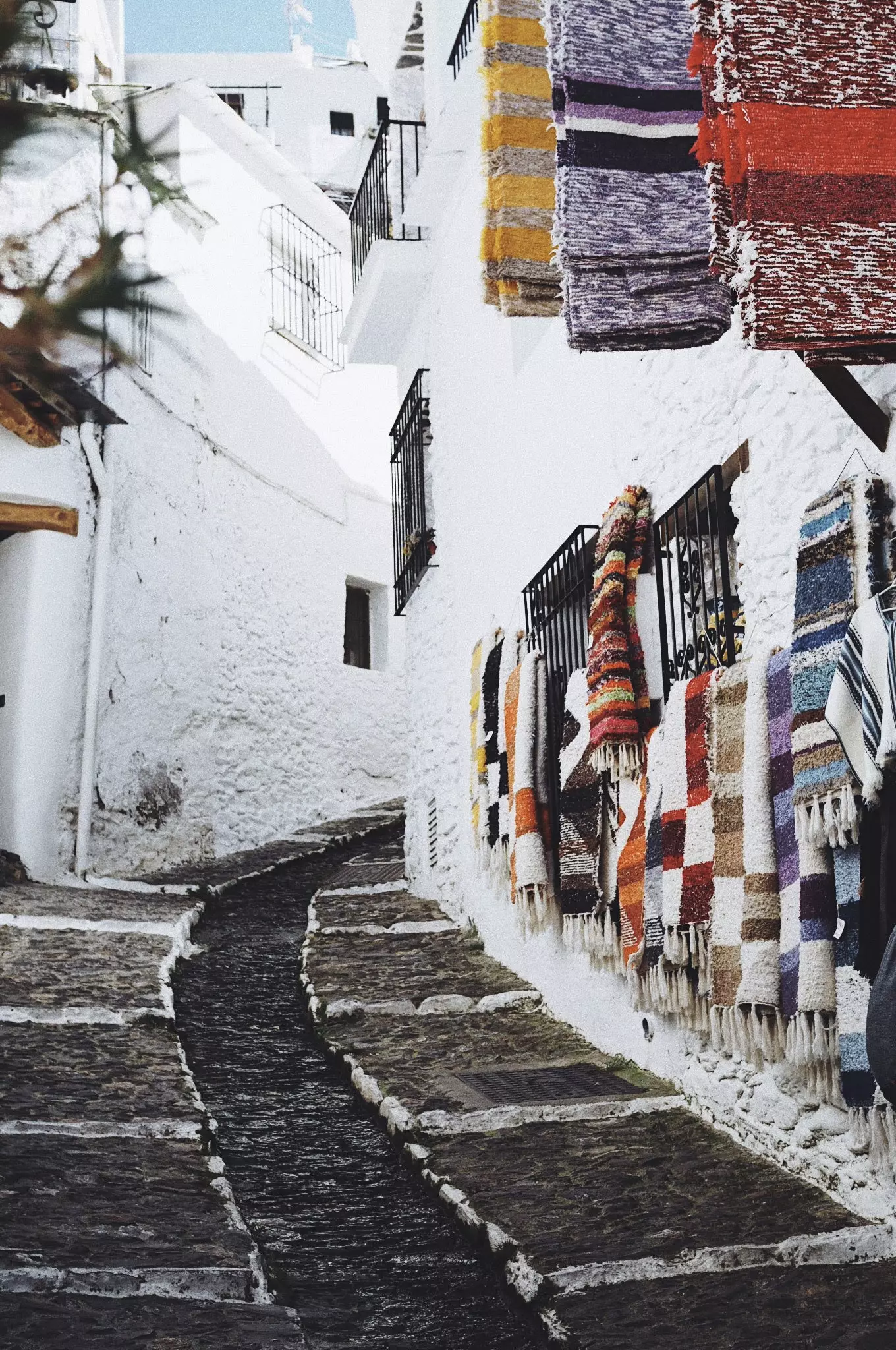
The Alpujarras.
TIME TO GET STARTED
From here, it's time to go down. The goal is to reach the banks of that Genil that runs down the mountain with the cold waters of the thaw, but to traverse them in reverse: towards their origin. A tour that takes place in the shelter of chestnut forests that explode in ocher and orange, yellow and brown colors in autumn, giving away the ideal stamp for the walk. No wonder many have described the old tram route as one of the most beautiful in Andalusia. Now, it's time to enjoy it on foot.
Soon the remains of the fabriquilla, the old hydroelectric plant that one day supplied energy to the locomotive, that ran on electricity, on the steepest climbs. It is a building made of stone from which a tower protrudes and which It has been open for more than 18 years as a traditional cuisine restaurant.
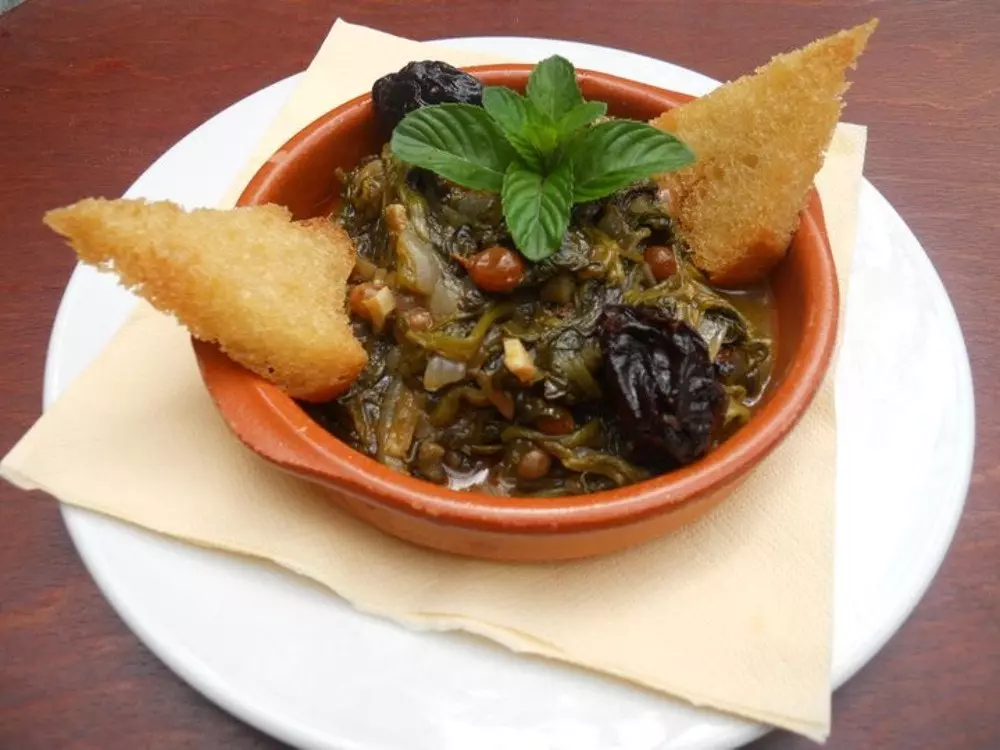
Mozarabic spinach.
The road leads to you in some moments passing through narrow tunnels through which the tram used to circulate and that today has also left room for cars. In others, you walk next to the flow of the river, stepping on the wet ground covered with leaves and feeling the strong humidity, while the Genil accompanies with its eternal rumor.
At the moment of arrival to the old Maitena station, located just two kilometers from Güéjar Sierra, Once again, a building, also in stone, built almost on the banks of the river is surprising. Impassive to the passage of time, Its use, yes, is very different from that of that time: the smell of wood in the fire reveals what is happening inside.
And although the route is easy and that of recharging energy in this case does not serve as an excuse, It will never hurt to delight in the local flavors. In this unique setting, overlooking the place where The Maitena, a tributary of the Genil, empties its waters into the main river, the rich local gastronomy tastes better than ever. And if not, pay attention to the display: on the table, a banquet worthy of Alfonso XIII himself based on choto, suckling pig, lamb shoulder or baked knuckle, which is for something in the mountains.
In the surroundings of the Maitena restaurant, history is still present, in this case embodied in information panels dotted along the route –although, notice to navigators, there will be nothing like doing the route with a local guide like Rodi, from Ecotourism Güéjar Sierra and La Vereda, for the details of the story. Be careful, because it also offers dramatized visits.
Next to walls that ooze fresh water from the heart of the earth, there are also the place that once served for the sale of tickets or the house in which the person in charge of maintaining the place lived.
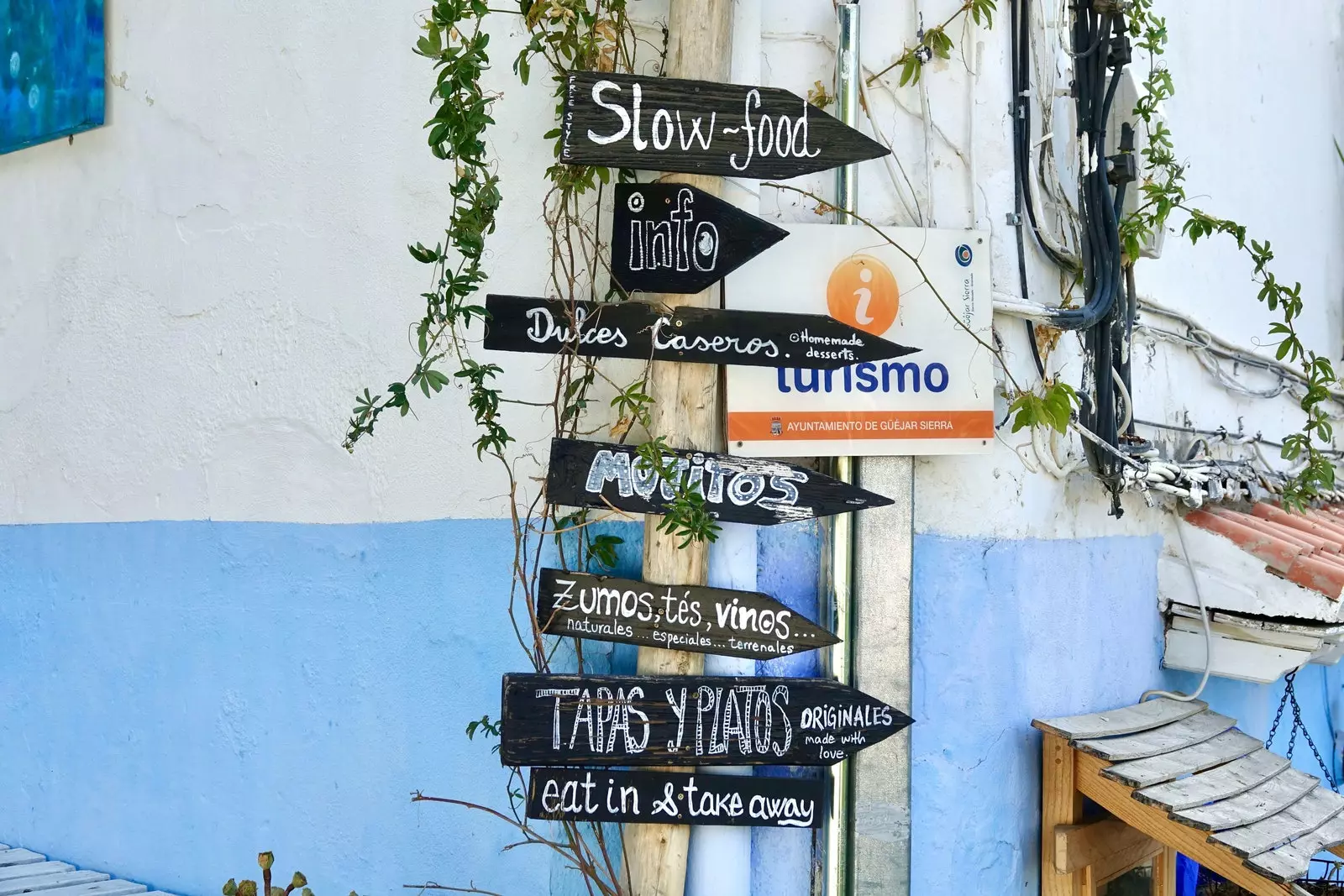
Posters in Güéjar Sierra.
ON THE WAY TO THE END
The terrain varies from this point and the rest of the path runs mostly along the narrow road converted into a lane that also leads the cars to the Barranco de San Juan. It imposes to enter once more in the tunnels, but also admire how the mountains embrace with their immense peaks and encourage you to continue enjoying its dizzying landscapes.
Step by step, nostalgia for what once was takes hold of those who are about to finish the route: when the construction of the Canales reservoir, the operating company announced to the Government that, in order to carry out the work, the tram should cease its activity: the swamp dam would make more than five kilometers of route will end up submerged.
So it was: the remains of the bridge that linked both banks and of the tracks are found under the water of the reservoir, and they are only visible when the rain is scarce and their capacity decreases. Traces of a past that, despite everything, are still more present than ever.
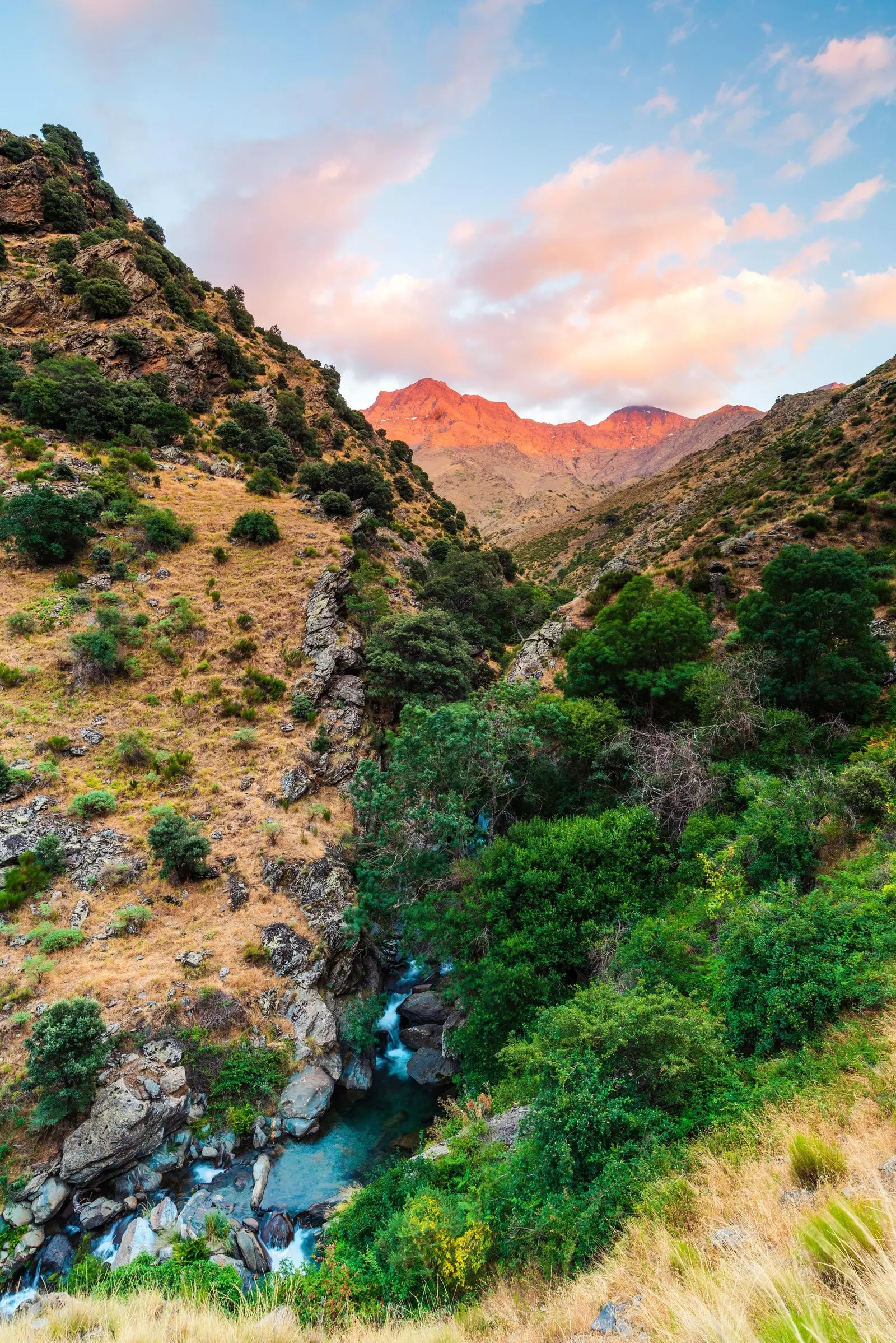
The Path of the Star.
At the end of the path, already in the Barranco de San Juan, Many other routes begin with their own names that invite you to explore the natural environment of the area: a real treasure. the path of the star, that invites you to penetrate the mountains, entering the slopes of Mulhacén, is an option.
But there will be those who choose the calmest plan: to sit on the restaurant's trellis terrace San Juan Ravine and drink a wine in honor of the Duke, that romantic who gave everything to make a dream come true. Because crazy things are to be done, and only then do true geniuses emerge.
